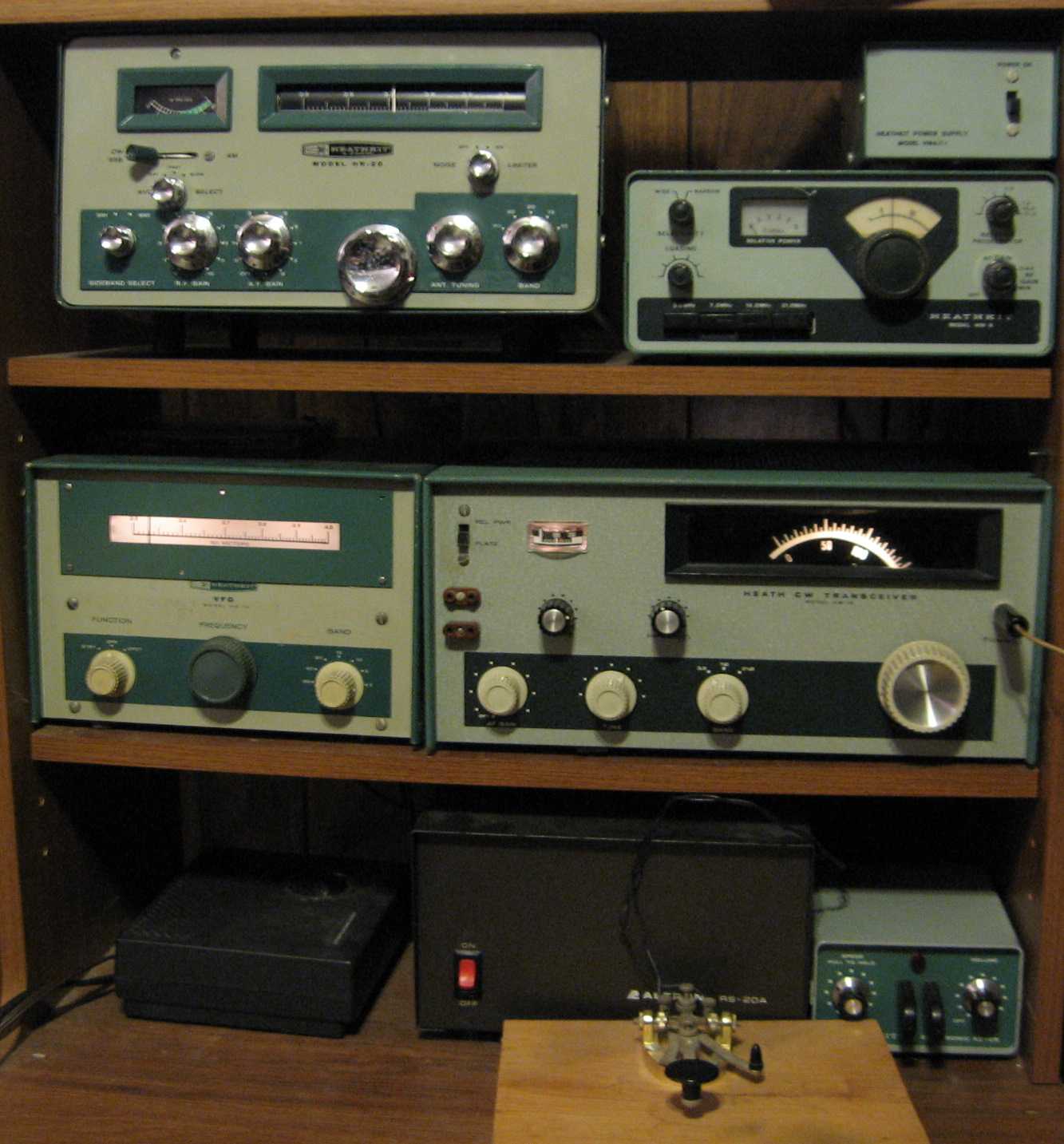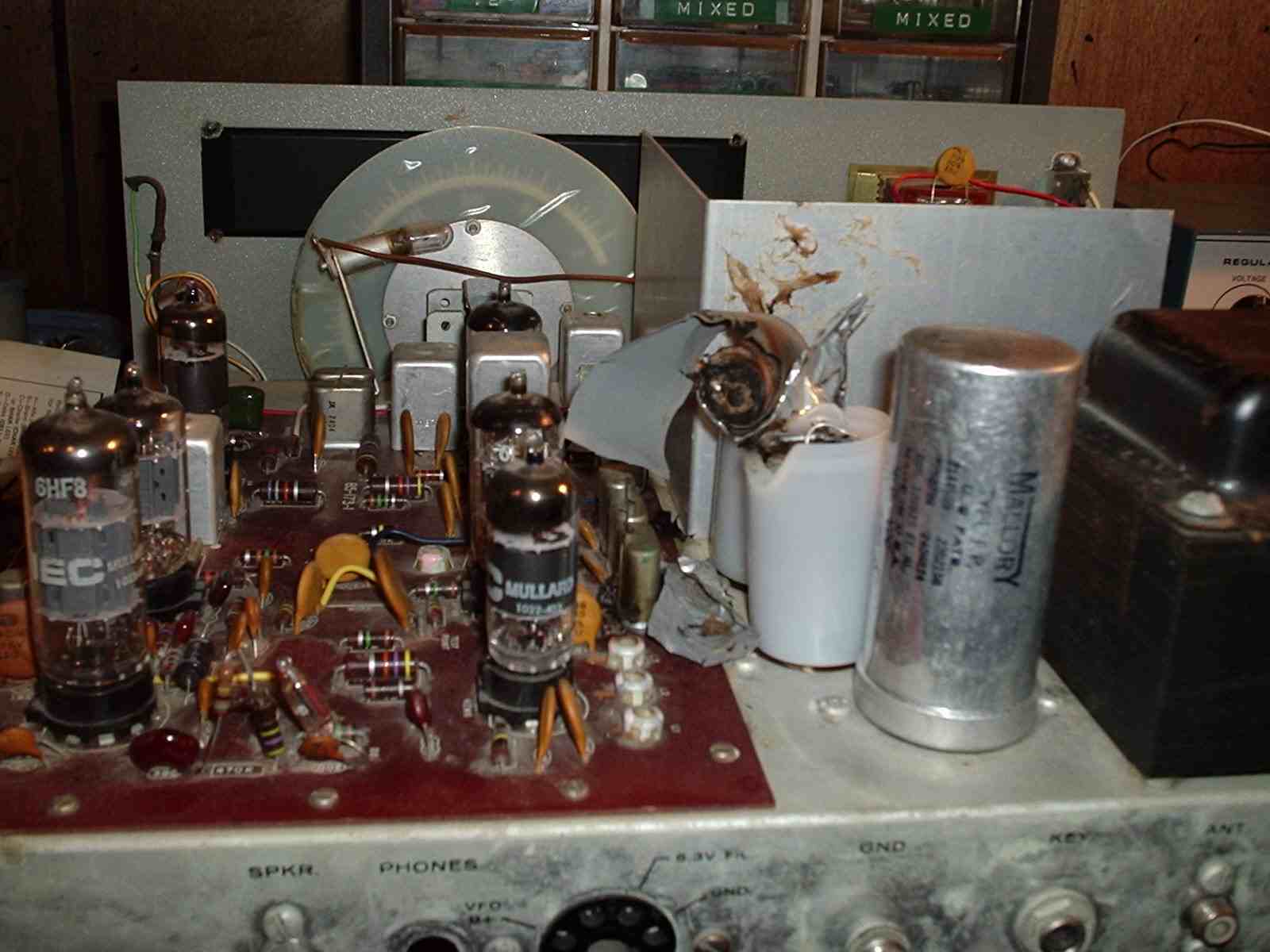Those of us first licensed when they still made rigs whose devices glowed in the dark are sometimes drawn back to using these relics.

HW-16 and HG-10. This so-called transceiver is actually a receiver and transmitter in the same box. They share a common power supply and are integrated with a reasonable QSK. When novices of the sixties often had separate receiver and transmitters, and often used a toggle switch when they could not afford or find a transfer relay - an almost seamless transceiver was a major advance. Well except that the transmit vfo is remote and needs to be separately spotted on the receive frequency. As the receiver was designed for CW it has a reasonable CW filter - in fact a real nice one compared to what was provided in lower end ham receivers such as the HR-10. This is my second rig as it was purchased used at a hamfest in York PA when I was a college student on work assignment away from home. I remember at this hamfest picking up this rig, a couple crystals, a key and a small antenna tuner - enough to get on the air.
Later I obtained the HG-10 VFO. It is likely older than the HW-16 as it has a smooth finish (instead of the matted finish on the HW-16). It came with a BNC connector and had a test equipment calibration tag on it - making me think it was in a lab but used to repair ham gear during spare time. Hence the calibration tag was a diversion to keep it in whatever lab it was in. Finally the vintage Heath keyer was found to complete the station. I really need to modify it to allow a modern paddle to be used with it!
After much dis-use I discovered the HW-16 had a chirp and it was finally abandoned to my junk pile. Then one year I decided it had to be trashed, given away or fixed. I opted for the latter. After fixing it I took it to a club meeting to show off. Then when I used it at home - funny smell and then a little smoke. Correct answer is turn off the rig. But instead I decided to poke my head to the back to see what was going on - pow! A small explosion and a little fire in the midst of a QSO. OK the fire was the size of a birthday candle but it was real and the entire house had to be aired out. The remnant of the capacitor is shown below. Also the explanation that when I installed new caps I used 35 mm film containers to house them in similar fashion to the originals on the top of the chassis. In my restoration other caps are down below.
